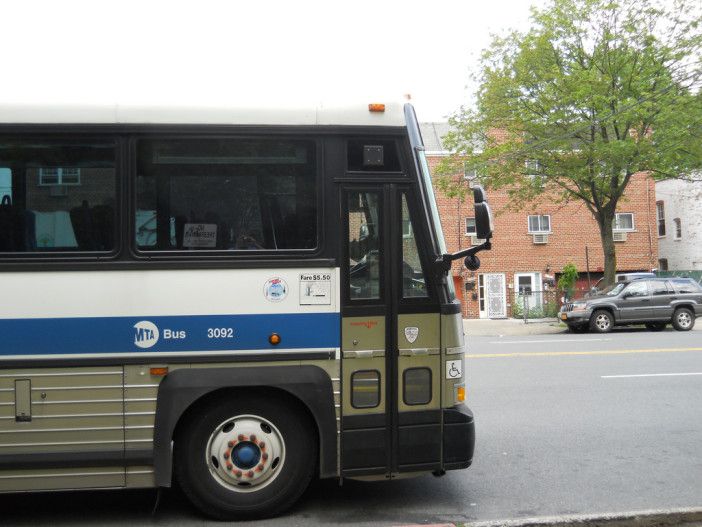Comptroller: One-Third Of MTA Express Buses Are Late, Especially In Southern Brooklyn

Apparently the X in X27 stands for extra late.
Three MTA express buses connecting Southern Brooklyn with Midtown, Manhattan — the BM1, X27 and X28 — show up late 33.7 percent of the time, according to an audit released Thursday by Comptroller Scott Stringer.
The BM1 transports riders from Mill Basin; the X28 connects Seagate and Bensonhurst to Manhattan; and the X27 serves Bay Ridge.
Across the city, the audit found that sampled express buses were not on time more than 30 percent of the time and commuters waited anywhere from 6 to 28 minutes after a scheduled departure time for the next available bus.
Brooklyn and Staten Island buses were the least reliable, accounting for nearly 40 percent of complaints about delays. Staten Island’s X1 and X17 buses displayed the worst performance, leaving either too late or too early an average of 35.9 percent of the time.
“We live in the greatest City in the world and we need a mass transit system that reflects that,” Stringer said. “Millions of New Yorkers rely on express buses each year. When one out of every three buses is not on time, it impacts every borough and hits at our City’s economic competitiveness. New York City already has the longest workday in the country – our express buses should be a part of the solution, not the problem.”
The audit also found that in 2014, the MTA began to monitor performance using two systems: Bus Trek, which tracks the timeliness of express buses, and Customer Relationship Management (CRM), which enables the MTA to track customer complaints more effectively. However, the MTA has still not set publicly reported on-time performance targets, Stringer said.
The audit examined timeliness, wheelchair functionality, and customer satisfaction of express buses. Auditors observed 12 different express bus routes at the first and last stop of each line in the originating borough during the morning and/or afternoon rush hours from October 2013 through December 2013, and measured whether buses left before, on time, or later than scheduled.
MTA officials agreed with four out of five of the Comptroller’s recommendations to improve performance, which included defining wheelchair lift and ramp cycling procedures for all buses and to continue utilizing Bus Trek and CRM. Officials did not immediately agree with the recommendation to develop performance targets for express buses and to publicly report progress toward meeting those targets.
A spokesperson for the MTA said that while the agency strives to achieve faster travel times, more evenly spaced arrivals, and better customer service, focusing on arrival times was missing the point.
“While we use On-Time Performance (OTP) data internally to assist us in benchmarking our service management and schedule making, OTP is not the best measure of the customer experience,” said MTA spokesman Kevin Ortiz. “We focus more on the evenness of service, or wait assessment. In other words, how long a customer waits for a bus. Wait assessment is what we will continue to focus on, not OTP, because customers generally arrive at their boarding locations at a continuous rate and their primary concern is that we have even service, not if specific buses are meeting their scheduled times.”
Ortiz added that the MTA has no control over factors such as traffic and road conditions.
Correction: A previous version of this article said X27 serves Bensonhurst. It serves Bay Ridge.



